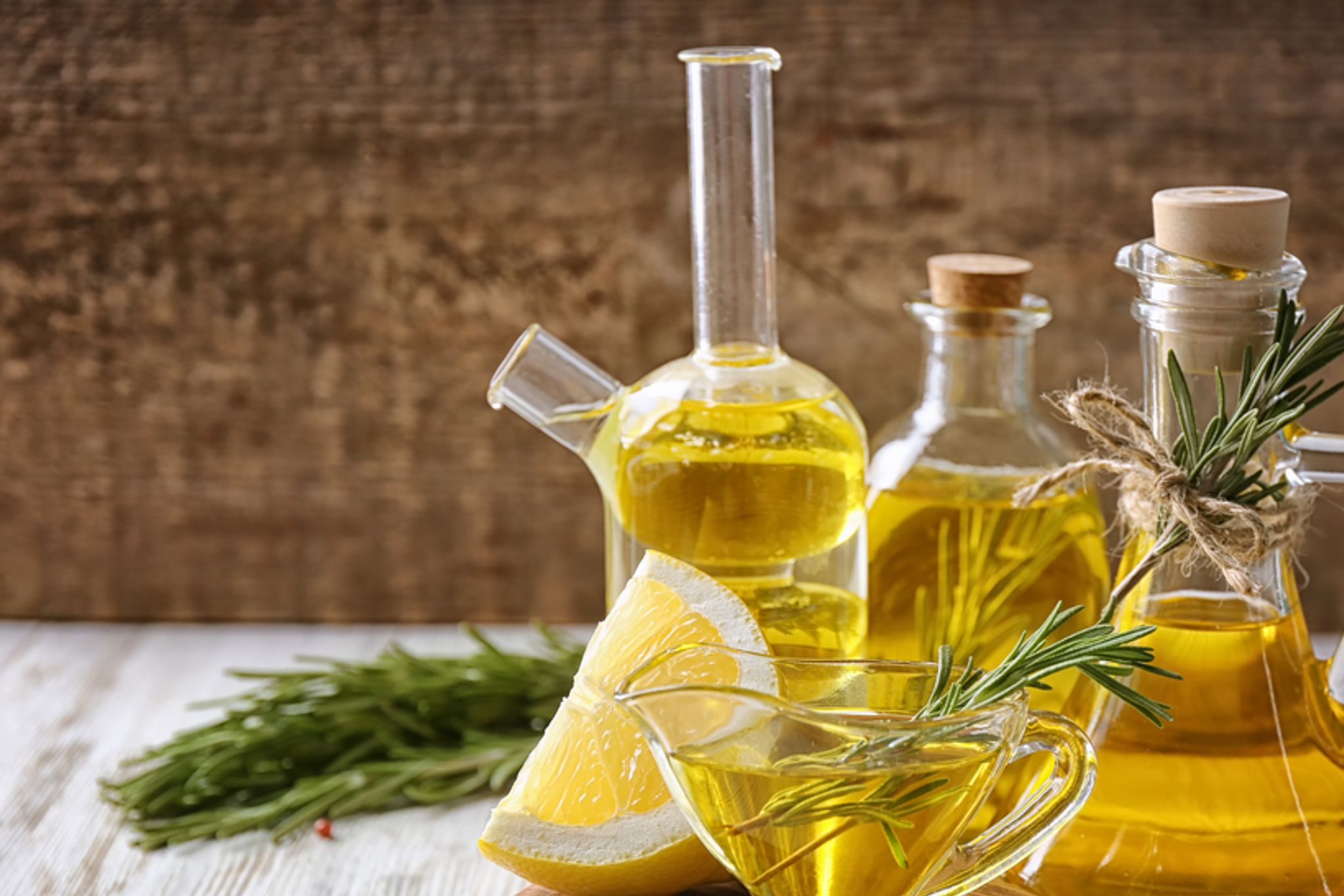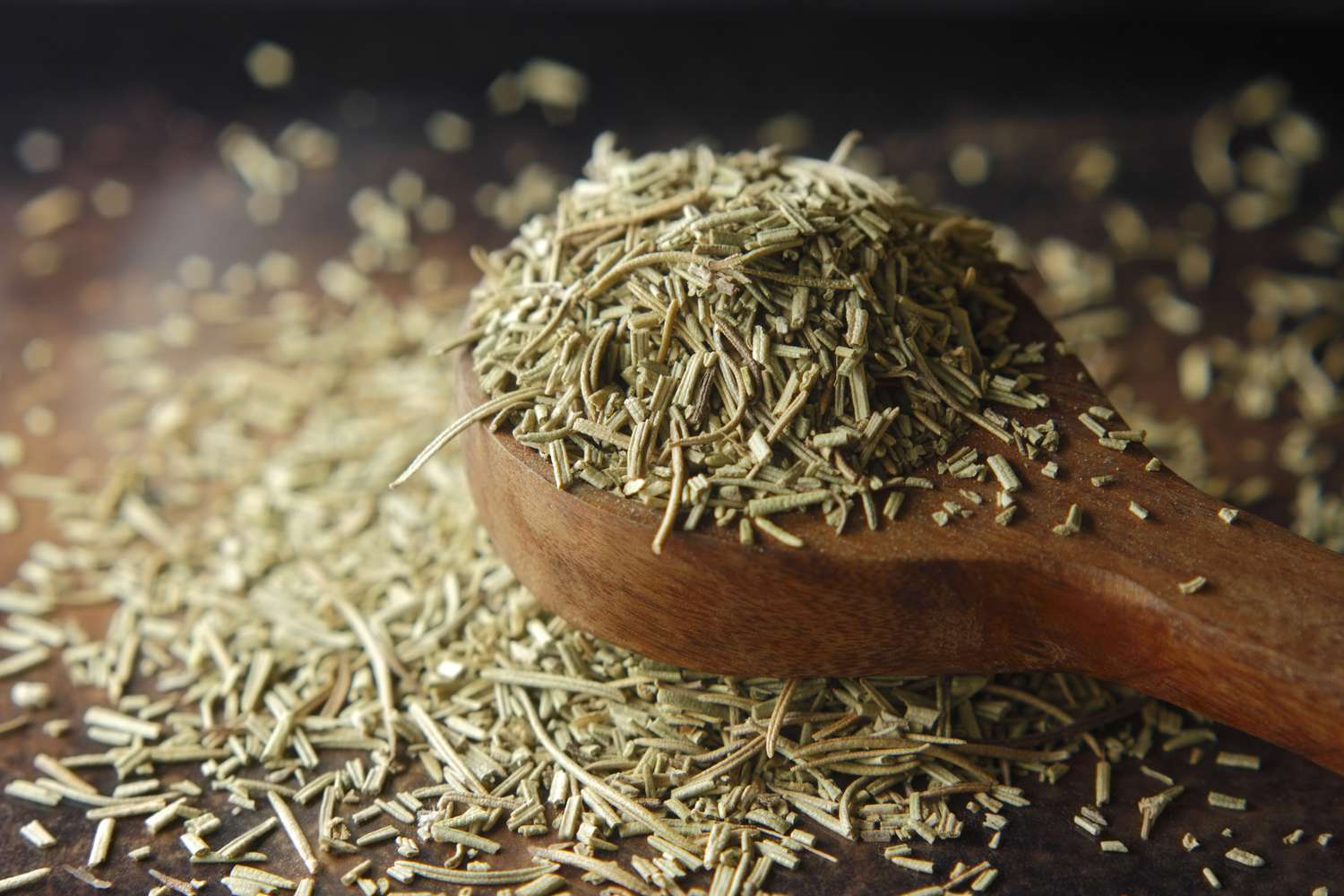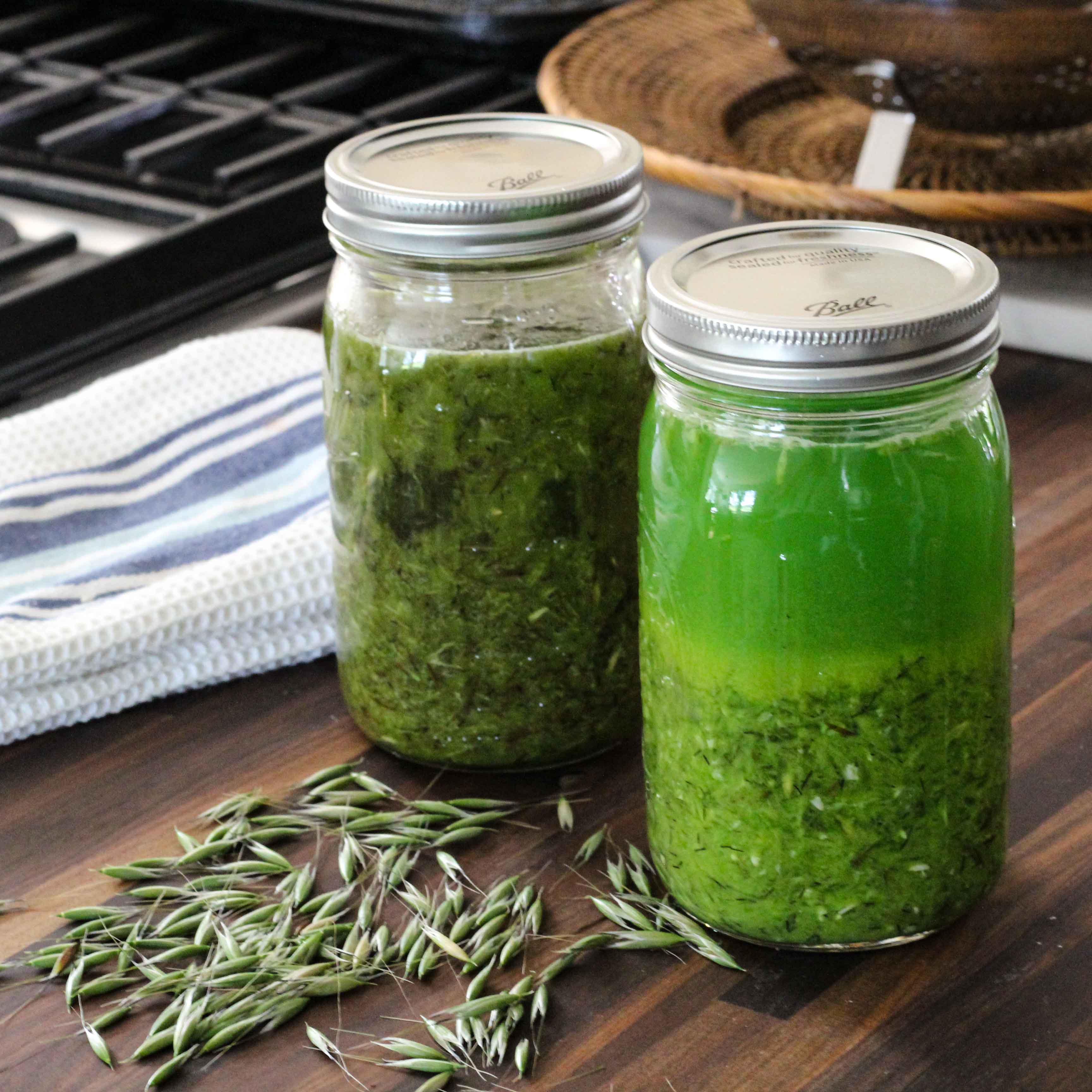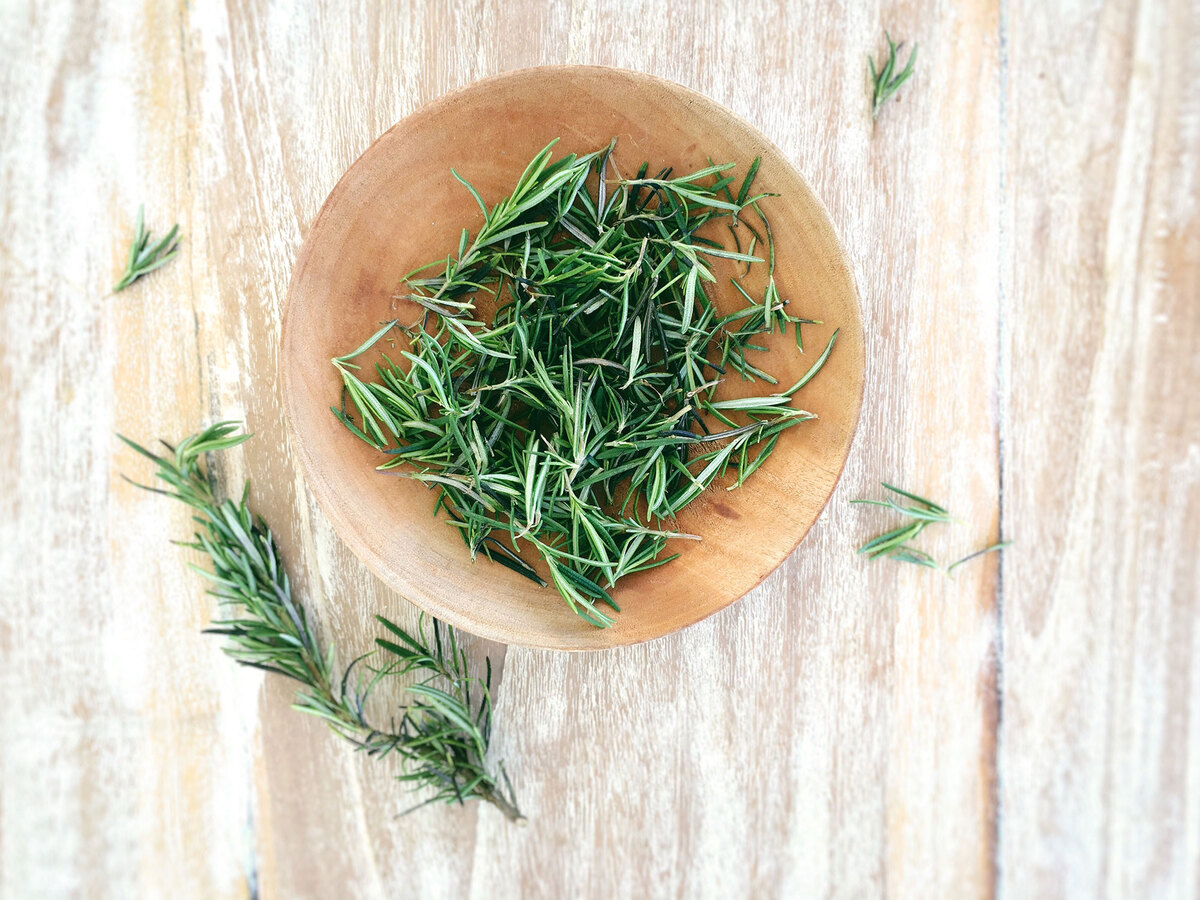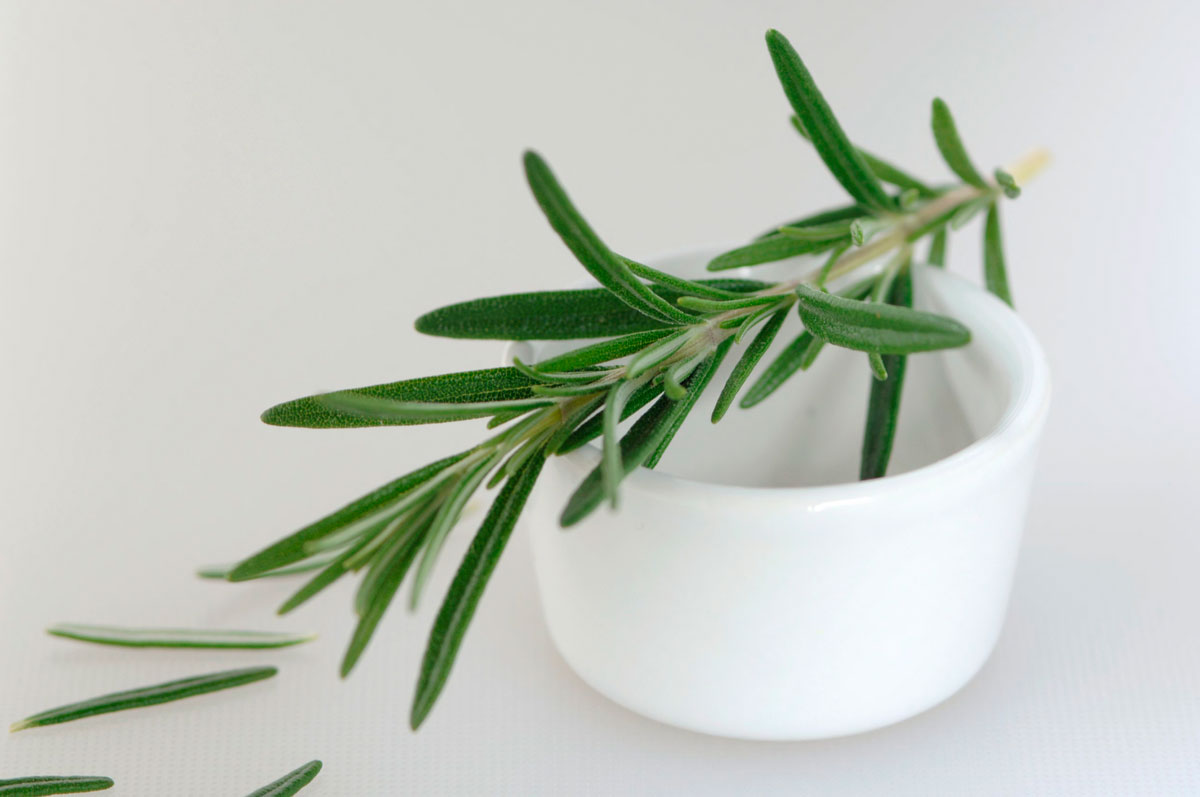Home>Gardening Techniques>DIY Projects>How To Use Rosemary Tincture


DIY Projects
How To Use Rosemary Tincture
Published: February 1, 2024
Discover the benefits of using rosemary tincture for your DIY projects. Learn how to make and effectively utilize this natural remedy to elevate your creations.
(Many of the links in this article redirect to a specific reviewed product. Your purchase of these products through affiliate links helps to generate commission for Chicagolandgardening.com, at no extra cost. Learn more)
Table of Contents
Introduction
Welcome to the world of DIY projects! If you’re someone who enjoys getting your hands dirty and creating things from scratch, then you’re in the right place. DIY projects not only allow you to customize and personalize items to suit your taste but also provide a sense of accomplishment and fulfillment.
One popular DIY project that you can embark on is making your own rosemary tincture. Rosemary tincture is a versatile and potent herbal extract that has been used for centuries for its various health benefits. From promoting digestion to improving cognitive function, rosemary tincture is a natural remedy that can easily be made at home with just a few simple steps.
In this article, we will explore what rosemary tincture is, its benefits, and how you can easily make it yourself. We’ll also provide tips on choosing the right rosemary and harvesting and drying it properly. So whether you’re a seasoned DIY enthusiast or someone looking for a new project to try, get ready to dive into the wonderful world of rosemary tincture making!
What is Rosemary Tincture?
Rosemary tincture is a concentrated herbal extract made from the leaves of the rosemary plant (Rosmarinus officinalis). It is created by soaking the plant material in alcohol, which helps extract the beneficial compounds and preserve them for long-term use.
Rosemary itself is a fragrant herb that has a long history of medicinal and culinary uses. It is rich in essential oils, antioxidants, and other bioactive compounds that contribute to its numerous health benefits. These include rosmarinic acid, carnosic acid, and caffeic acid, which have been found to possess anti-inflammatory, antioxidant, and antimicrobial properties.
When rosemary is tinctured, these powerful compounds are extracted and concentrated, resulting in a potent herbal remedy that can be used in various ways. It is known for its ability to support digestion, boost memory and cognitive function, relieve anxiety and stress, and even promote hair growth.
One of the advantages of using rosemary tincture is its versatility. It can be used internally by adding a few drops to water, tea, or other beverages, or it can be applied topically to the skin. This makes it a convenient and accessible natural remedy for a wide range of health concerns.
It is important to note that rosemary tincture should be used in moderation and not as a substitute for professional medical advice. While it is generally safe for most people, it is always a good idea to consult with a healthcare professional before incorporating any new herbal remedy into your routine.
Now that we understand what rosemary tincture is and its potential benefits, let’s dive into the process of making it yourself at home.
Benefits of Rosemary Tincture
Rosemary tincture offers a wide range of health benefits, thanks to its high concentration of essential oils and bioactive compounds. Here are some of the key benefits of incorporating rosemary tincture into your wellness routine:
1. Digestive Support
Rosemary has traditionally been used to support digestion and alleviate common digestive issues such as bloating, indigestion, and gas. The herb stimulates the production of digestive enzymes, improves bile flow, and helps to relax the muscles of the gastrointestinal tract, promoting efficient digestion.
2. Cognitive Enhancement
Rosemary is well-known for its cognitive-enhancing properties. The bioactive compounds in rosemary, such as rosmarinic acid and carnosic acid, have been found to improve memory, focus, and mental clarity. Incorporating rosemary tincture into your daily routine may help boost cognitive function and support overall brain health.
3. Antioxidant Powerhouse
Rosemary is packed with antioxidants, which help protect the body against oxidative stress and damage caused by free radicals. These antioxidants help neutralize harmful molecules in the body, reducing inflammation and promoting overall health and well-being.
4. Stress Relief
Using rosemary tincture may help alleviate stress and anxiety. The aroma of rosemary itself has been found to have a calming effect on the nervous system, helping to reduce feelings of stress and promoting relaxation. Adding a few drops of rosemary tincture to a diffuser or incorporating it into a relaxing bath can provide a soothing and calming experience.
5. Hair and Scalp Health
Applying rosemary tincture topically to the scalp may promote healthy hair growth and improve scalp conditions. Rosemary has been used traditionally to stimulate hair follicles, prevent dandruff, and increase circulation to the hair follicles, promoting stronger, thicker, and healthier hair.
These are just a few of the many benefits that rosemary tincture has to offer. However, it is important to note that individual results may vary, and it’s always best to consult with a healthcare professional before incorporating any new herbal remedy into your routine.
How to Make Rosemary Tincture
Making your own rosemary tincture is a straightforward process that requires minimal ingredients and equipment. Follow these simple steps to create your own homemade rosemary tincture:
1. Choosing the Right Rosemary
Start by selecting fresh, organic rosemary sprigs. Look for vibrant green leaves and avoid any wilted or discolored parts. Choosing high-quality rosemary will ensure a potent and flavorful tincture.
2. Harvesting Rosemary
Harvest your rosemary sprigs in the morning when the essential oil content is at its peak. Use clean gardening shears or scissors to snip off the sprigs, leaving a few inches of stem intact.
3. Drying Rosemary
Once harvested, rinse the sprigs under cool water to remove any dirt or debris. Gently pat them dry with a clean towel. Hang the sprigs upside down in a well-ventilated area away from direct sunlight. Allow them to dry completely for about two weeks or until the leaves become crisp and brittle.
4. Preparing the Tincture Ingredients
Once the rosemary sprigs are dry, remove the leaves from the stems and place them in a clean glass jar. You can choose to chop the leaves for a more potent extraction or leave them whole for a milder flavor.
5. Making Rosemary Tincture
Fill the jar containing the rosemary leaves with high-proof alcohol such as vodka or grain alcohol. Ensure that the alcohol completely covers the rosemary, leaving about an inch of headspace at the top. Seal the jar tightly with a lid.
6. Infusing the Tincture
Store the jar in a cool, dark place for 4 to 6 weeks. Remember to shake the jar every few days to help extract the beneficial compounds from the rosemary leaves. The longer you let the tincture infuse, the stronger the flavor and potency will be.
7. Straining and Storing the Tincture
After the desired infusing time has passed, strain the tincture using a cheesecloth or fine mesh strainer to remove any plant material. Squeeze the cloth or strainer to extract every bit of liquid. Transfer the tincture to a dark glass bottle with a dropper for easy dispensing. Label the bottle with the date and contents.
That’s it! Your homemade rosemary tincture is ready to use. Store it in a cool, dark place where it will remain potent for several months.
Now that you know how to make rosemary tincture, you can explore the various ways to incorporate it into your daily routine.
Choosing the Right Rosemary
When making rosemary tincture, it is important to start with high-quality rosemary sprigs to ensure a flavorful and potent end product. Here are some tips for choosing the right rosemary for your tincture:
1. Organic and Fresh
Look for organic rosemary, preferably from a trusted source. Organic rosemary is free from pesticides and other harmful chemicals, ensuring a clean and pure tincture. Additionally, choose fresh rosemary sprigs that are vibrant green and fragrant. Avoid wilted or discolored leaves, as they may affect the quality of your tincture.
2. Varietal Selection
Rosemary comes in different varieties, each with its own unique flavor profile. The most commonly used variety for culinary purposes is Rosmarinus officinalis, but you can experiment with other varieties like Tuscan Blue, Arp, or Prostrate Rosemary for a twist in flavor. Select a variety that aligns with the taste you desire for your tincture.
3. Harvesting Time
The timing of your rosemary harvest can impact the flavor and potency of the tincture. For the best results, harvest your rosemary in the morning when the essential oil content is at its peak. The oils in the leaves are what give rosemary its distinct aroma and therapeutic properties, so harvesting at the right time will ensure the highest concentration of these oils.
4. Quality of Leaves
Inspect the rosemary leaves before harvesting or purchasing. Look for leaves that are plump, firm, and free from any signs of mold or discoloration. Healthy and vibrant leaves will yield a more flavorful and aromatic tincture.
5. Consider Growing Your Own
If possible, consider growing your own rosemary plant. This allows you to have complete control over the quality and freshness of your rosemary. Rosemary is a hardy herb that can thrive in both garden beds and containers, making it a great addition to your herb garden.
By following these guidelines, you can ensure that you have the best quality rosemary for your tincture, resulting in a superior end product with optimal flavor and medicinal properties.
Harvesting Rosemary
Harvesting rosemary properly is crucial to ensure the best flavor and potency for your tincture. Here are some guidelines to follow when harvesting rosemary:
1. Timing
The timing of your harvest plays a significant role in the flavor and aroma of your rosemary. It is best to harvest rosemary in the morning after the dew has dried but before the heat of the day. This is when the essential oil content is at its highest, giving your tincture a robust and aromatic flavor.
2. Selecting the Sprigs
Choose healthy, vigorously growing rosemary sprigs for harvesting. Look for branches that have plenty of leaves and are not yet woody. The younger, more tender growth typically has a stronger aroma and flavor, making it ideal for tincture making.
3. Using Pruning Shears
Use clean and sharp pruning shears or scissors to harvest the rosemary. This ensures a clean cut, minimizing damage to the plant and preserving its vitality. Avoid using your hands to strip the leaves, as this can bruise the plant and lead to reduced oil content.
4. Cutting Method
To harvest the sprigs, locate a stem that is about four to six inches long and cut it just above a leaf node, where the leaves meet the stem. This encourages new growth and helps the plant maintain its shape and form.
5. Moderation
When harvesting rosemary, it’s important to practice moderation. Avoid stripping the plant completely as it needs leaves to continue growing and thriving. Instead, only harvest a portion of the plant, taking into consideration its size and overall health.
6. Post-Harvest Care
After harvesting, gently brush off any dirt or insects from the sprigs. If necessary, rinse them under cool water and pat dry with a clean towel. Use the harvested rosemary immediately or store it in a resealable bag or container in the refrigerator for up to a week.
By following these harvesting guidelines, you can ensure that you gather fresh and aromatic rosemary sprigs that will contribute to a flavorful and potent tincture.
Drying Rosemary
Drying rosemary is a simple and effective way to preserve its flavor and medicinal properties for making tincture. Here’s how to properly dry rosemary:
1. Harvesting Rosemary Sprigs
Begin by harvesting fresh rosemary sprigs from your plant. Choose sprigs that are healthy and free from any signs of disease or pests. Harvesting in the morning, when the essential oil content is highest, will ensure the best flavor and aroma.
2. Preparing the Sprigs
After harvesting, gently remove any dirt or insects from the sprigs. Rinse them under cool water if necessary, and pat dry with a clean towel. If there are any discolored or wilted leaves, remove them to ensure the best quality dried rosemary.
3. Bundling the Sprigs
Gather the rosemary sprigs into small bundles, about 4-6 sprigs per bundle. Tie each bundle securely with a piece of string or twine, leaving enough length for hanging. Make sure the bundles are not too large or tightly packed, as this can inhibit airflow and slow down the drying process.
4. Hanging the Bundles
Find a well-ventilated area away from direct sunlight to hang the bundles. Ideally, this should be a cool and dry place, such as a pantry or a room with good air circulation. Hang the bundles upside down from a hook or a clothes hanger, ensuring that they are not touching each other.
5. Waiting for Drying
Allow the rosemary sprigs to dry completely. This process usually takes about two weeks, but it can vary depending on environmental conditions. The leaves should feel brittle and crumble easily when touched.
6. Testing for Dryness
To test if the rosemary is completely dry, take a sprig and try to snap it. If it breaks easily, it is dry and ready to be stored. If it bends or feels pliable, it needs more time to dry. Patience is key to ensure proper drying and avoid mold or spoilage.
7. Storing Dried Rosemary
Once the rosemary is completely dry, remove the leaves from the stems and store them in an airtight container. Glass jars with tight lids are excellent for preserving the freshness and flavor of the dried rosemary. Keep the container in a cool, dark place to maintain the quality for an extended period.
By following these steps, you can successfully dry rosemary for use in making your own homemade tincture. Dried rosemary will retain its flavor and medicinal qualities for months, allowing you to enjoy the benefits of this versatile herb all year round.
Preparing the Tincture Ingredients
Before you can start making your rosemary tincture, it’s essential to gather and prepare the necessary ingredients. Here’s what you’ll need:
1. Rosemary
First and foremost, you need fresh or dried rosemary leaves. If you are using fresh rosemary, make sure it has been picked and dried properly to avoid moisture in the tincture. If using dried rosemary, ensure that it is of good quality and free from any impurities.
2. Alcohol
The primary ingredient for making a tincture is alcohol. High-proof alcohol, such as vodka or grain alcohol, is typically used for extracting the medicinal properties of the rosemary. The alcohol acts as a solvent, helping to extract the beneficial compounds from the herb.
3. Glass Jar
Choose a clean glass jar with a tight-fitting lid to house your tincture. A dark-colored glass jar, such as amber or blue, helps protect the tincture from light exposure, which can degrade its potency over time.
4. Measuring Tools
To ensure accuracy in your tincture preparation, have measuring tools on hand. Measuring cups or a kitchen scale can be used to measure the appropriate amount of rosemary and alcohol. This helps maintain consistency in your tincture’s strength and potency.
5. Labeling Materials
Properly label your tincture jar to keep track of when it was made and its contents. Include the date of creation, the herb used, and any additional information you find relevant. This ensures you know the age of your tincture and helps you stay organized in your herbal preparations.
By gathering and preparing these ingredients ahead of time, you’ll have everything you need to start making your rosemary tincture. Remember to ensure the quality and cleanliness of your ingredients to produce the best possible tincture.
Making Rosemary Tincture
Now that you have gathered and prepared your ingredients, it’s time to start creating your homemade rosemary tincture. Follow these simple steps to make your tincture:
1. Prepare the Jar
Ensure that your glass jar is clean and dry. A sterilized jar helps prevent any contamination and ensures the longevity of your tincture.
2. Add Rosemary
Take your prepared rosemary leaves and place them in the jar. You can choose to chop the leaves for a more concentrated flavor, or leave them whole for a lighter taste. Fill the jar about halfway with rosemary, taking care not to overpack it.
3. Pour in Alcohol
Now, pour your chosen alcohol into the jar until it completely covers the rosemary leaves. Leave about an inch of headspace at the top. The alcohol acts as a solvent, extracting the beneficial compounds from the rosemary leaves and preserving them for long-term use.
4. Seal the Jar
Tightly seal the jar with its lid, ensuring that there are no leaks. Give the jar a gentle shake to mix the rosemary and alcohol together. This helps initiate the extraction process and ensures that the rosemary is evenly distributed within the tincture.
5. Store and Infuse
Place your sealed jar in a cool, dark place, away from direct sunlight. Let the tincture infuse for about 4 to 6 weeks, allowing the alcohol to extract the beneficial properties from the rosemary. During this time, give the jar a gentle shake every few days to agitate the mixture.
6. Strain the Tincture
After the infusing period, strain the tincture using a cheesecloth or fine mesh strainer to remove the rosemary leaves. Squeeze the cloth or strainer to extract all the liquid, ensuring you get every drop of the infused tincture.
7. Bottle and Label
Transfer the strained tincture into a dark glass bottle with a dropper for easy dispensing. Label the bottle with the date of creation and the contents. Store the bottle in a cool, dark place to maintain the potency and freshness of the tincture.
Now that you have successfully completed the process, you can enjoy the fruits of your labor by incorporating your homemade rosemary tincture into a variety of recipes and wellness routines.
Storing and Using Rosemary Tincture
After you have made your rosemary tincture, it’s important to store it properly and use it in a way that maximizes its benefits. Here’s what you need to know:
1. Proper Storage
Store your rosemary tincture in a cool, dark place away from direct sunlight. Exposure to light can degrade the quality of the tincture over time. A cabinet or pantry works well for storing your tincture, ensuring that it remains potent and fresh for an extended period.
2. Shelf Life
Rosemary tincture has a long shelf life when stored properly. It can maintain its potency for several years. However, it’s good practice to use your tincture within 1-2 years to ensure optimal flavor and effectiveness.
3. Dosage and Usage
The dosage of rosemary tincture will depend on individual needs and preferences. Begin with a small amount, such as 5-10 drops, and gradually increase if desired. You can take the tincture directly under the tongue or add it to water, tea, or other beverages for consumption.
4. Culinary Uses
Rosemary tincture can also be used in cooking and baking to impart its aromatic flavor. Add a few drops to marinades, dressings, or sauces to enhance the taste of your dishes. Remember that tinctures are highly concentrated, so start with a small amount and adjust based on taste.
5. Topical Application
You can apply rosemary tincture topically for various purposes. It can be diluted with a carrier oil, such as coconut or jojoba oil, and massaged onto the skin to soothe sore muscles or promote hair growth. Always conduct a patch test before using any new product on your skin.
6. Consulting a Healthcare Professional
If you are unsure about the appropriate dosage or usage of rosemary tincture for your specific needs, it’s always best to consult a healthcare professional. They can provide guidance based on your individual health conditions and medications.
By storing your rosemary tincture correctly and using it responsibly, you can enjoy the numerous benefits it has to offer for an extended period.
Tips and Precautions
When working with rosemary tincture, it’s important to keep a few tips and precautions in mind to ensure your safety and maximize the effectiveness of the tincture. Here are some key considerations:
1. Quality Ingredients
Always use fresh, organic rosemary when making your own tincture. Choosing high-quality ingredients will contribute to a more potent and flavorful end product.
2. Proper Harvesting
Harvest rosemary sprigs in the morning when essential oil content is highest. This will result in a more aromatic and flavorful tincture.
3. Sanitary Practices
Ensure your equipment and workspace are clean and sanitized to prevent contamination. Use sterilized glass jars and wash your hands thoroughly before handling the tincture ingredients.
4. Dilution for Topical Use
If using the rosemary tincture topically, always dilute it with a carrier oil to avoid skin irritation. Perform a patch test prior to applying the blend to a larger area of your body.
5. Seek Professional Advice
If you have specific health concerns, are pregnant, or are taking medications, it’s wise to consult with a healthcare professional before using rosemary tincture. They can provide personalized advice based on your unique circumstances.
6. Allergic Reactions
While rosemary is generally well-tolerated, some individuals may have allergic reactions. If you experience any adverse effects, discontinue use and seek medical attention if necessary.
7. Start with Small Doses
When using rosemary tincture internally, start with small doses and gradually increase as needed. It’s always better to start conservatively and adjust according to your body’s response.
8. Storage and Shelf Life
Properly store your rosemary tincture in a cool, dark place to maintain its potency. Check the tincture periodically for any signs of spoilage, and discard if it shows any unusual odor, discoloration, or mold.
By following these tips and taking the necessary precautions, you can ensure a safe and successful experience with rosemary tincture.
Conclusion
Congratulations! You have now learned how to make your own rosemary tincture, a versatile and beneficial herbal extract. By following the steps outlined in this article, you can create a potent and flavorful tincture that can be used for various purposes.
Throughout this guide, we explored the process of choosing the right rosemary, harvesting and drying the herb, preparing the tincture ingredients, and making the tincture itself. We also discussed the benefits of rosemary tincture and provided tips and precautions to ensure a successful experience.
Remember, rosemary tincture can support digestive health, improve cognitive function, provide antioxidants, relieve stress, and promote hair and scalp health. Whether used internally or externally, rosemary tincture offers a natural and holistic approach to health and wellness.
As with any herbal remedy, it is important to use rosemary tincture in moderation and consult with a healthcare professional if you have any specific health concerns or are taking medications. Pay attention to proper storage and labeling to ensure the longevity and freshness of your tincture.
Now that you have the knowledge and the tools, it’s time to embark on your DIY journey and create your own batch of rosemary tincture. Enjoy the process, experiment with different variations, and discover the many ways you can incorporate this powerful herbal extract into your daily routine.
So, what are you waiting for? Start gathering your ingredients, preparing your jar, and enjoy the benefits of homemade rosemary tincture. Cheers to your herbal crafting adventures!
